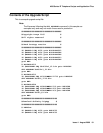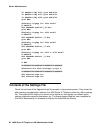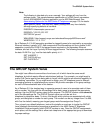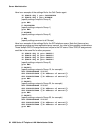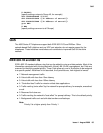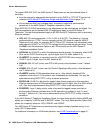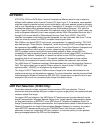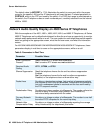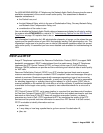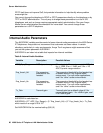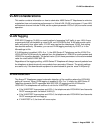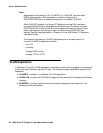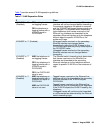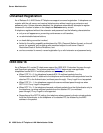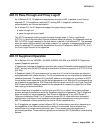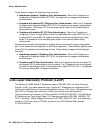
QoS
Issue 4 August 2006 89
For 4602/4602SW/4602SW+ IP Telephones, the Network Audio Quality Screen gives the user a
qualitative assessment of the current overall audio quality. This assessment is based on
separate evaluations of:
● the Packet Loss, and
● the total Network Delay, which is the sum of Packetization Delay, One-way Network Delay,
and Network Jitter Compensation Delay, and
● consideration of the codec in use.
You can disable the Network Audio Quality data and assessment display for all sets by setting
the system value NTWKAUDIO to a value of “0.” Administering Options for the 4600 Series IP
Telephones on page 100 explains how to do so.
This information’s implication for LAN administration depends, of course, on the values the user
reports and the specific nature of your LAN, like topology, loading, QoS administration, etc. This
information’s major use is to give the user an idea of how network conditions affect the current
call’s audio quality. It is assumed you have more detailed tools available for troubleshooting the
LAN.
RSVP and RTCP
Avaya IP Telephones implement the Resource ReSerVation Protocol (RSVP) to support WAN
bandwidth management. RSVP is administered from the media server. Avaya IP Telephones
implement the RTP Control Protocol (RTCP) so Avaya’s Voice over IP (VoIP) Monitoring
Manager (VMON) software can provide real-time monitoring and historical data of audio quality
for VoIP calls.
Resource ReSerVation Protocol (RSVP) is an IETF-standard protocol hosts use to request
resource reservations throughout a network. RSVP-compliant hosts send messages through a
network to receivers. Receivers respond with messages requesting a type of service and an
amount of resources, for example, bandwidth, to carry out that service. The host is responsible
for admitting (approving) or rejecting (denying) the request. In a QoS context, RSVP tries to
reserve bandwidth on the network for voice calls on a call-by-call basis. If insufficient bandwidth
is available for the target voice quality, a request to use network bandwidth for a voice call is
rejected.
RTP Control Protocol (RTCP), as its name implies, is a protocol that provides control functions
for Real-time Transport Protocol (RTP). RTP provides end-to-end network services for real-time
data such as Voice over IP. But RTP does not provide a reservation function, nor does it
guarantee any level of QoS. RTCP supplements RTP by monitoring the quality of the RTP
services and can provide real-time information to users of an RTP service. In a QoS context,
RTCP is valuable to identify information such as:
● packet loss,
● 1-way delay or how long a packet has to go from source A to destination B,
● jitter, etc.



